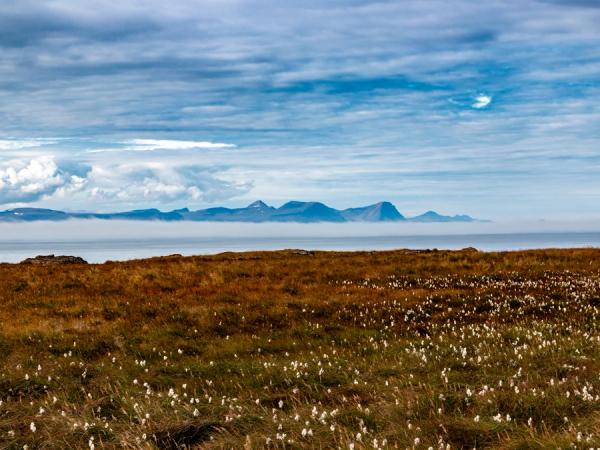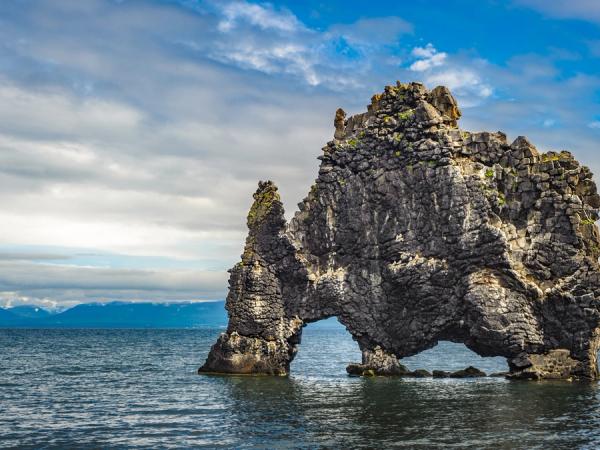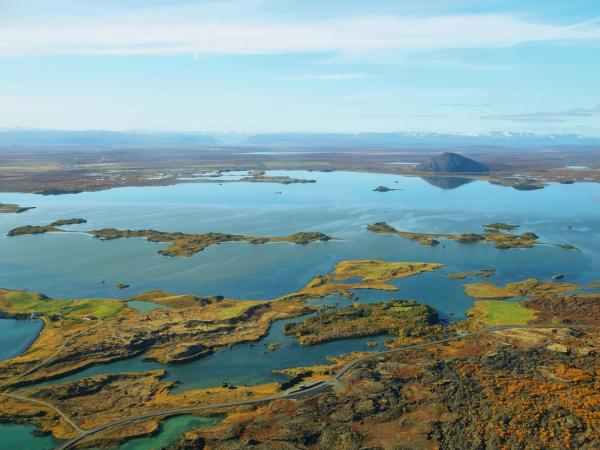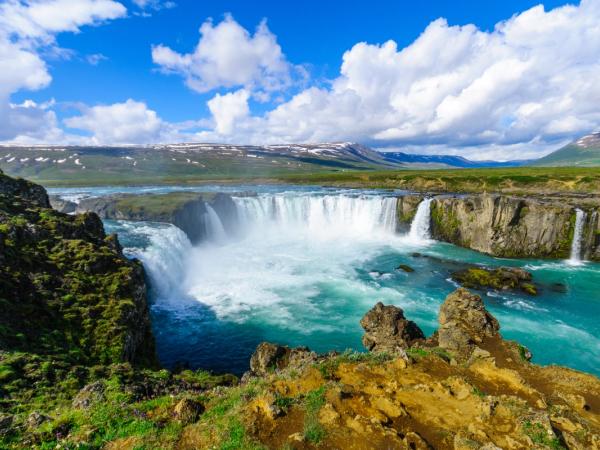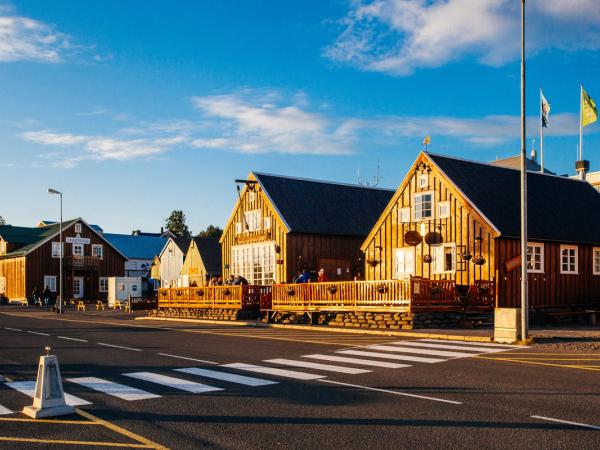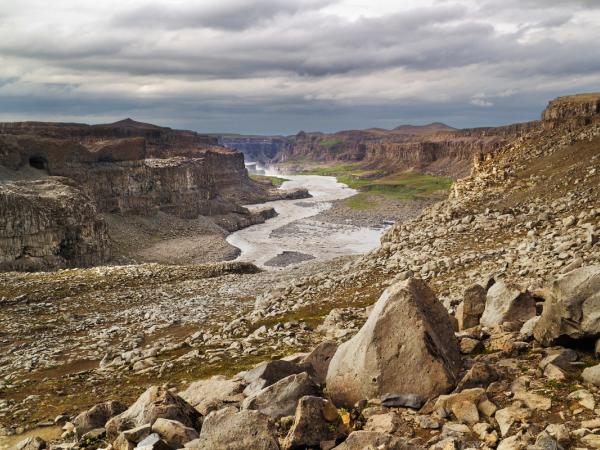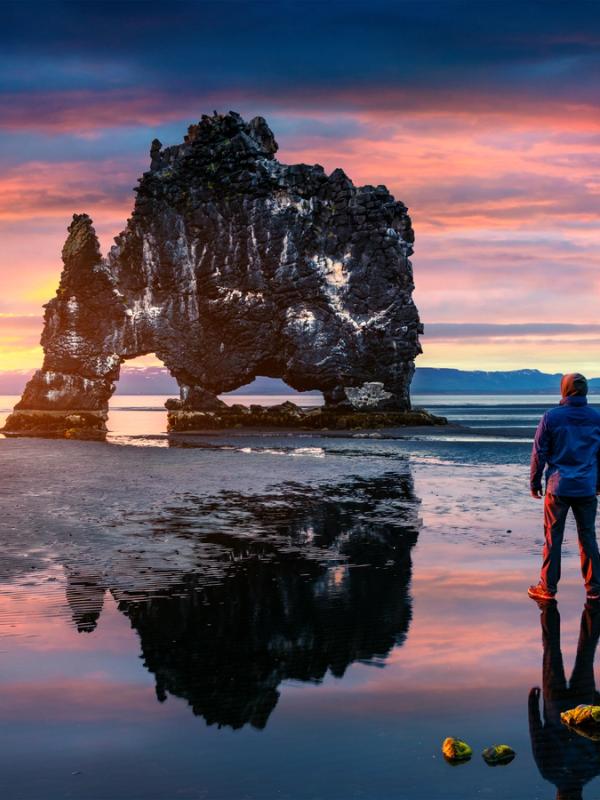
North Iceland: The Ultimate Guide
Sparsely populated farm country, fog-laden fishing villages clinging to coastline, snow-capped peaks towering above icy blue fjords, and landscapes formed by violent and powerful volcanic activity. Welcome to the north of Iceland.
For many, this is the Iceland that they see in their mind’s eye before visiting the country. The amazing volcanic power on display here is a far cry from the lush green of the south coast, and the mountainous peninsulas clawing their way out towards the Arctic Circle are primed for adventurous campers. If you fancy experiencing some of Iceland’s most raw and powerful scenes without the crowds, then this is the region for you.
Akureyri
All the action in north Iceland centers around Akureyri, which is unofficially dubbed the capital of the north. Prettily perched along the island’s longest fjord and surrounded by beautiful mountains, it’s easy to fall in love with the scenery around this town, but don’t underestimate the culture and things to do in this deliciously slow-paced destination.
If you're tired of cooking for yourself in the camper, there are plenty of museums and a decent range of restaurants. If you’re not in your own 4x4, it’s also a good jumping point for day tours into the northern highlands. The most popular destination is probably Askja, a very long day trip but worth it. For more information on what to see and do in Akureyri, read our guide to Iceland’s northern capital (coming soon).
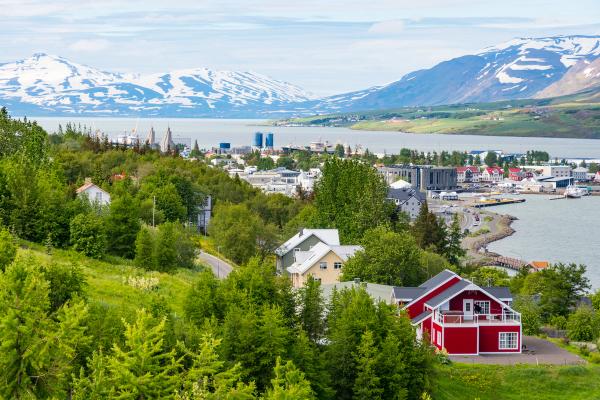
What to See and Do
But we know that you’re not traveling to Iceland to spend all your time in the cities – you want to get out into nature. There are plenty of diversions for the adventurous campers in this region to take you away from the Ring Road, leading you to your own discoveries.
The Arctic Coast Way
The Arctic Coast Way is a recently launched tourist route that is the ultimate road trip for those campers looking to stray away from the well-trodden Ring Road. Taking in the quiet 900km of coastline that stretches along Iceland’s northern coast, you’ll pass through the peninsulas of deserted black sand beaches, barking seals, towering mountains, and driftwood crashing up onto the rocky coastlines.
Luckily, there are plenty of cosy fishing villages nestled on the coast to break up this moody and dramatic sub-arctic road trip. To do the entire route, begin in the town of Hvammstangi and take the coastal roads all the way over to Bakkafjörður in the east. Each peninsula offers its own unique experiences for those who venture this far north. It’s a way to experience the desolate beauty of Iceland. If you don’t have enough time for such an epic undertaking, tackling any of the peninsulas alone provides welcome relief from the crowded ring road.
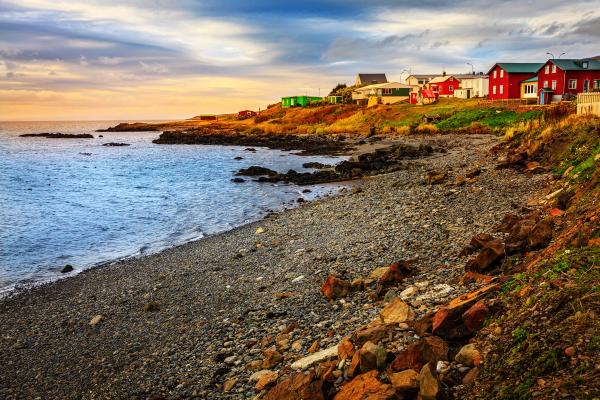
North-East Iceland
Characterized by verdant valleys, long fjords, plenty of farms, and some interesting peninsulas, far too often, campers speed through this area either on their way towards Akureyri or back to Reykjavik. But there’s more hiding here than meets the eye.
Probably the most popular detour in this region is to take in some of the Vatnsnes Peninsula, well known for the seals that lazily lie on the rocky shores and the ‘elephant rock,’ or Hvitserkur. However, most will opt to shoot up to either and then back towards the ring road – to leave the crowds behind, continue your way around the entire peninsula for inspiring views and plenty of secret spots.
Skagi Peninsula
Next over is the Skagi Peninsula, where beautiful mountains give way to spectacular cliffs teeming with bird life, and hiding away at the end of road 748 on the eastern edge, you’ll find Grettislaug, a beautiful natural hot spring with great views out towards the small islands that populate the fjord. This peninsula is even less visited than Vatnsnes, but hiking up to the Ketubjörg cliffs makes the trip worthwhile. Millions of sea birds soar around what is one of the most interesting-looking cliff faces in the country. Once you’re far out enough along the path, you can turn back to see a waterfall dropping off the spectacularly high cliffs into the ocean below – a special treat that not many know about.
For the adrenaline junkies, near the town of Varmahlíð where you’ll be able to go white water rafting down the Austari-Jökulsá River with Arctic Rafting. The river’s rapids are rated a whopping 4 out of 5, but there’s no experience needed to go on a trip – just nerves of steel, some physical fitness, and the ability to swim, of course.
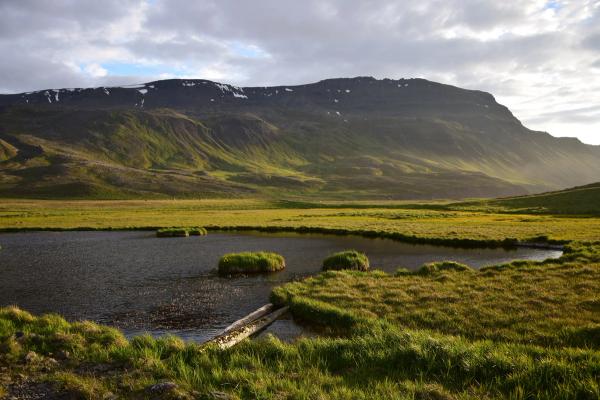
Tröllaskagi Peninsula
The Tröllaskagi Peninsula gives a good taste of what the rest of the north offers. Accessed by a spectacular coastal road that connects the small towns of Siglufjörður, Olafsfjörður, and Dalvik northwest of Akureyri, you can expect mountains coming right up to the coastline, epic tunnels beneath them and amazing coastal views along the way. Siglufjörður is worth stopping off in, as this large town was once at the center of the Herring Rush and one of the busiest ports in all of Iceland. Now, without the herring, the population has dwindled, but the tunnels giving easier access to it have started to bring the town new life.
On the western edge of the peninsula, you can also find the Hofsós Swimming Pool, commanding impressive views out over Skagafjörður and distant mountains on the Skagi Peninsula, and in Dalvik, make a bee-line to Gisli Eirikur Helgi Kaffihús for some of the best fish soup on offer around the country and the warmest hospitality.
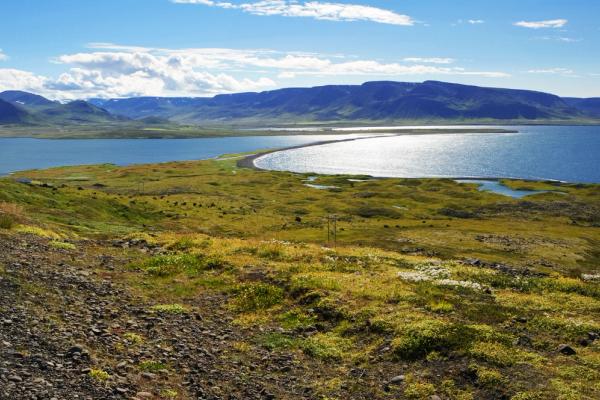
North-West Iceland
Lake Myvatn is just to the west of Akureyri and is a very easy place to spend a few days camping and exploring. The lake itself is only Iceland’s 4th largest body of water, but it’s the spectacular volcanic scenery that surrounds it that makes it one of Iceland’s best attractions. You’ll see volcanic pseudo-craters, one of the island’s most impressive lava fields, dramatic geological features, plenty of wild birds, and, of course, steaming geothermal areas at both Krafla and Hverir. For a dip, head to the nearby Myvatn Nature Baths – the north’s answer to the Blue Lagoon in the south. There are plenty of great campsites around the lake. Don’t forget to stop off at Goðafoss, the waterfall of the Gods, along the way.
Húsavík, an hour’s drive northeast of Akureyri, is the unofficial Capital of Whale Watching in Iceland. Sitting at the beginning of the Tjörnes Peninsula, the tours that depart from the docks here have the highest success rate when it comes to sighting the giant beasts of the ocean that love to feed in the bountiful Icelandic waters. The town itself is also a lively little place, with good restaurants, cafes, and a great campsite near the swimming pool. There is also a recently opened geothermal pool called GeoSea Geothermal Sea Baths, with infinity pools commanding spectacular views over the fjord towards the opposite mountains.
Jökulsárgljúfur Nature Reserve
Jökulsárgljúfur Nature Reserve is the northernmost part of the Vatnajökull National Park, the largest National Park in Europe. Although it doesn’t share any borders with Vatnajökull, it became a part of the National Park because the entire landscape here was created by the crashing rivers and glacial floods that began with eruptions underneath the glacier. To experience the best of the nature reserve, take road 862, which leads you up and down the western side of the canyon. Ásbyrgi Canyon is the attraction furthest north, a wide horse-shoe-shaped gorge with walls at their tallest, over 100 meters. This is also where you’ll find the main information center, with plenty of maps, information, and quality knowledge about hiking trails from the rangers inside.
The main attraction in the park, however, is Dettifoss, the most powerful waterfall in Europe. You’ll hear the roar of these falls long before you see any water, and it’s an impressive sight from either side of the canyon. Road 862 is freshly paved and has all the facilities and railings one would expect at the biggest attraction in the area. In contrast, road 864 on the eastern side of the canyon is a gravel road that lets you get up closer to the falls when you eventually reach the car park for Dettifoss. To read more about what to see and do in this part of the Vatnajökull National Park, head on over to our more detailed blog post on Jökulsárgljúfur (coming soon!).
The Remote Northeast
The Remote Northeast of Iceland is an underappreciated gem of a place, but only the adventurous who can appreciate the beauty of desolate places will enjoy it. The small villages that are strung along the Melrakkaslétta Peninsula are the least pretentious places you’ll find in Iceland; huddled together and braced against the arctic winds, you know that this is the real deal. Mere kilometers from the Arctic Circle, you’ll find lots of open space to yourself and plenty of sights that would be crowded in any other location in the country.
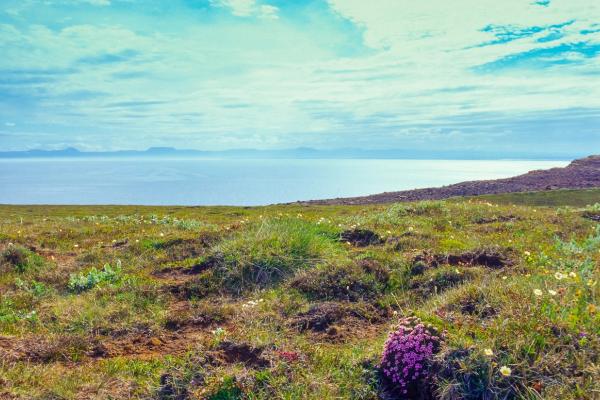
The Langsnes Peninsula
The Langsnes Peninsula isn’t anything special in Iceland – not the furthest north, nor east, or even closest point to the Arctic Circle (Grimsey Island off the north coast takes that title), but it really feels like it should be. This uninhabited peninsula can be traversed on a rough dirt track leading to the end and the Fontur Lighthouse, staring off into the rough arctic oceans towards Svalbard. On the southern side of the peninsula, you can find the remains of an abandoned fishing village, Skálar.
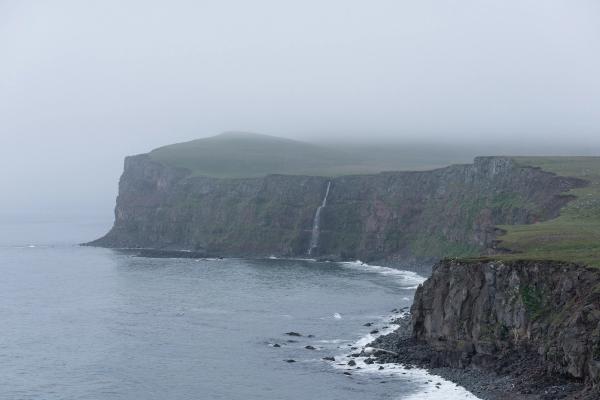
Our Favourite Campsites
There are plenty of well-equipped campsites in the north of Iceland. For our recommendations, check out the map below.
Conclusion
North Iceland is where you’ll find some of the country’s most dramatic landscapes, from powerful waterfalls to remote peninsulas and quiet fishing villages. Whether you’re driving the Arctic Coast Way, exploring volcanic wonders near Lake Mývatn, or spotting whales in Húsavík, this region is packed with adventure and wide-open spaces. With great campsites, small towns full of character, and roads that lead to some of Iceland’s wildest sights, it’s perfect for those looking to escape the crowds. Take your time here, and you’ll see why many travelers say the north is their favorite part of Iceland.

